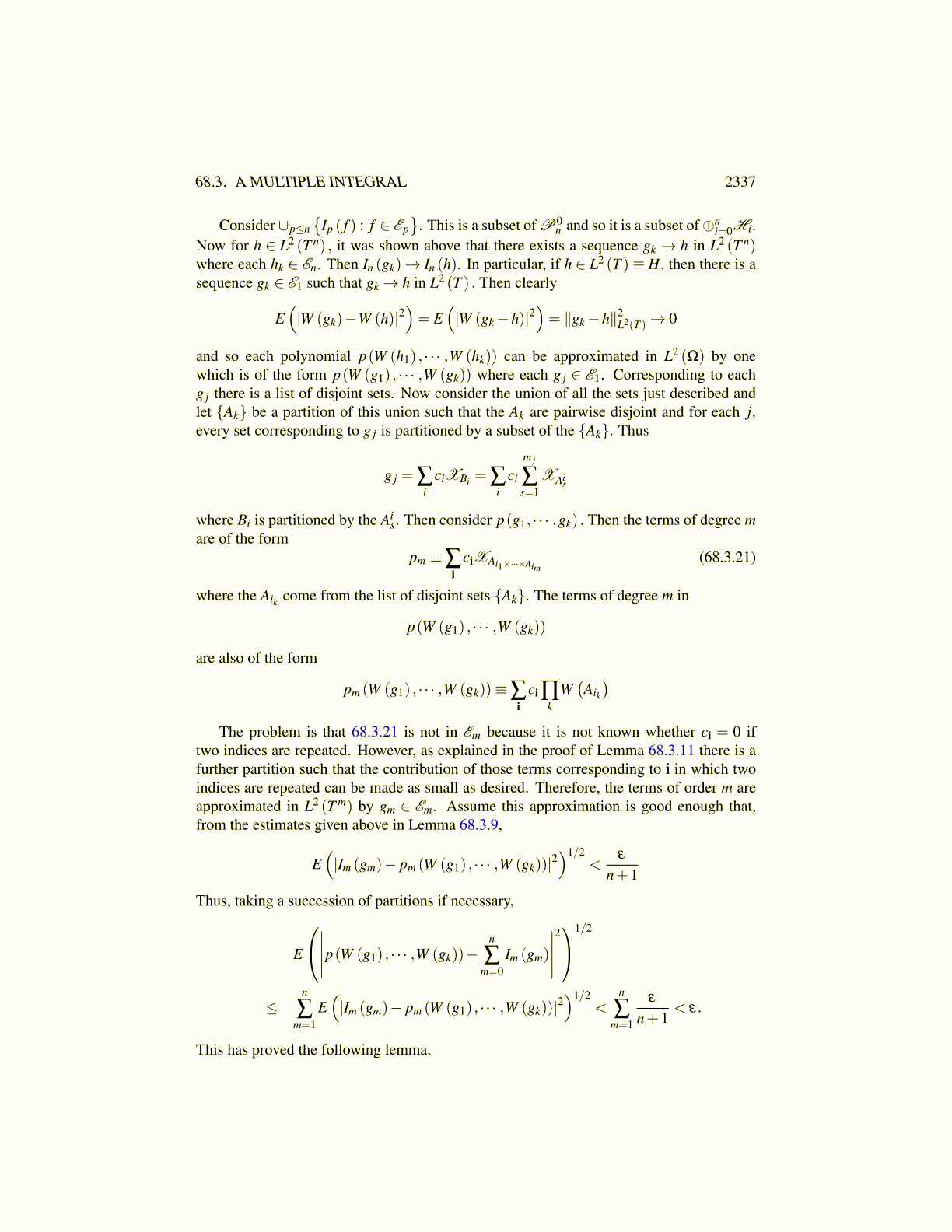
68.3. A MULTIPLE INTEGRAL 2337
and so, it follows that G ∈ G . If G ∈ G , does it follow that GC is also?
XRp = XRp∩G +XRp∩GC
HenceXRp −XRp∩G = XRp∩GC
Both of the functions on the left can be approximated in L2 by the desired kind of functionsand so the one on the right can also. It follows from Dynkin’s lemma that G ≡ σ (K )which is the product measurable sets. Thus if U is any set in Bn, it follows that XU can beapproximated in L2 (T n) with linear combinations of sets like XA1×···×An .
Of course nothing is known about whether the sets Ai are disjoint. Also it is not knownwhether these linear combinations of these functions equals 0 if ti = t j. Thus there issomething which needs to be proved.
Lemma 68.3.11 The functions in En mentioned above are dense in L2 (T n).
Proof: From Lemma 68.3.10, it suffices to show that XA1×···×An can be approximatedin L2 (T n) with functions in En. This is where it will be important that the measure issufficiently like Lebesgue measure. Let
{Bi
k
}mk=1 be a partition of Ai such that m
(Bi
k
)≤
2m(Ai)m . Let {Bk}p
k=1 denote all these sets so p = mn. They are not necessarily disjointbecause it is not known that the Ai are disjoint. However, one can say that it is possible tochoose ei equal to either 0 or 1 such that
XA1×···×An = ∑i
eiXBi1×···×Bin
where we can have Bik ⊆ Ak. Let J be those indices i which involve a repeated set. That issome Bi j = Bik for some j ̸= k. How many possibilities are there? There are no more thanC (n,2)m because there are C (n,2) possibilities for duplicates among the Ak and then thereare m sets in the partition of Ak.
∫T· · ·∫
T
(∑i∈J
eiXBi1×···×Bin
)2
dt · · ·dt
=∫
T· · ·∫
TC (n,2)mXBi1×···×Bin
dt · · ·dt
≤ C (n,2)mn
∏k=1
m(Bik
)The mixed terms are 0 because for a fixed k,
{Bik
}mi=1 are disjoint. Now from the description
of these, m(Bik
)m < m(Ak) and so
∫T· · ·∫
T
(∑i∈J
eiXBi1×···×Bin
)2
dt · · ·dt
≤ C (n,2)mn
∏k=1
2m(Ak)
m=
C (n,2)mmn
n
∏k=1
m(Ak)